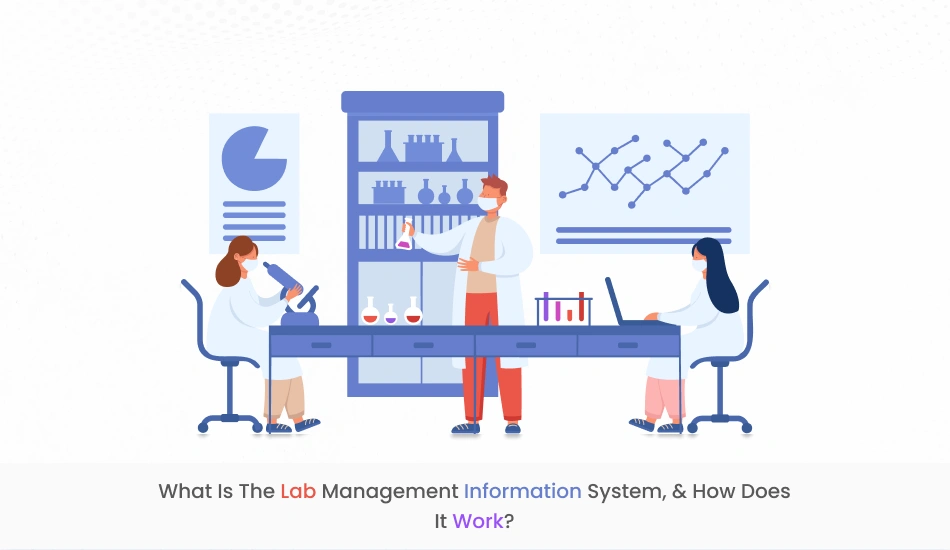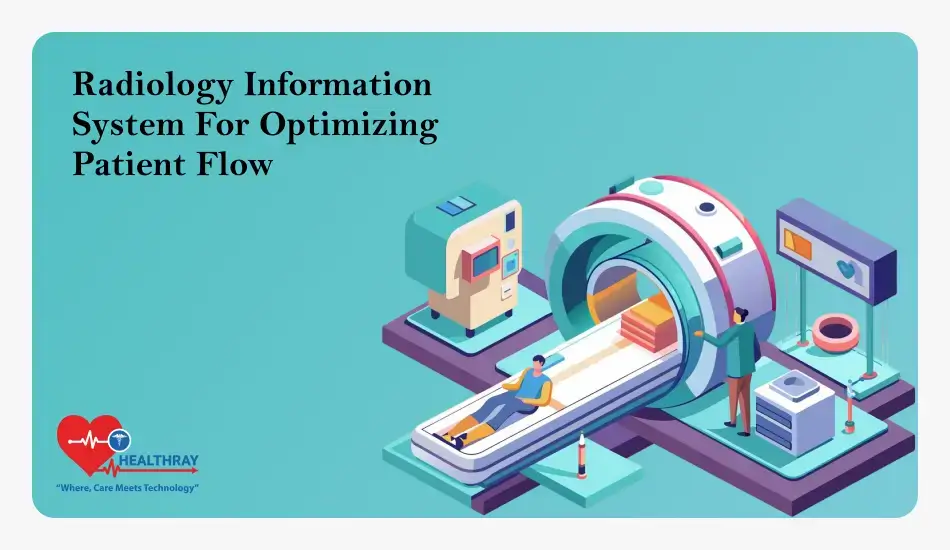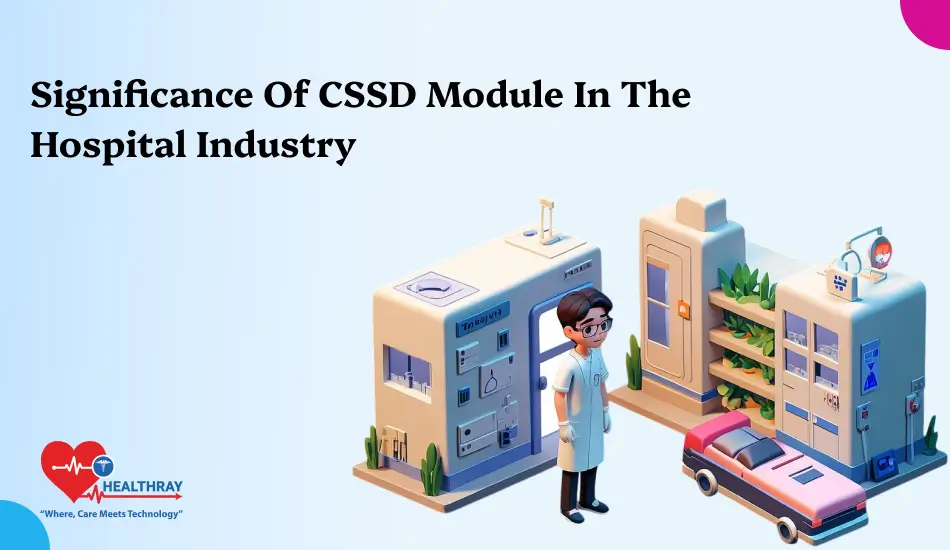Quick Summary
A laboratory management system or information system (LIMS) software program integrates tasks such as sample tracking. It also manages data to optimize lab operations. Hence , the lab management information system centralizes data, automates procedures, and increases sample throughput and workflow efficiency to improve outcomes.
Introduction
The efficient administration of laboratory resources and data is essential to scientific experimentation and study. In response to these demands, lab management information systems, or LMIS, have developed into indispensable instruments. They facilitate efficient patient data management, cooperation, and analysis in laboratory settings. A comprehensive LMIS integrates several functionalities to streamline processes and increase productivity.
Therefore it also ensures data integrity, serving as the digital backbone of a modern laboratory.
An LMIS is a group of software applications designed for laboratory environments. It caters to various disciplines like engineering, chemistry, biology, and physics. Moreover the lab management information system suites typically include modules for sample tracking, inventory control, experiment planning, and data analysis.
Additionally, it provides functionalities for compliance management and reporting.
LMIS enables labs to efficiently manage their supplies, reagents, and equipment. Inventory management is another essential aspect facilitated by LMIS. With the lab management information system, researchers may reduce waste and maximize resource utilization by using automated processes and centralized databases.
Hence these tools enable monitoring stock levels, tracking samples, keeping an eye on expiration dates, and initiating purchase procedures when necessary.
The Laboratory information management system is fundamental to the arranging and execution of tests. It provides capabilities for protocol management, document administration, scheduling, and collaboration. Inside the framework, analysts can plan tests, relegate assignments, and apportion assets.
The lab management information system advances collaboration and guarantees that studies follow set policies and standards.
The productive integration of research facility frameworks into a few modules is aimed at extending research facility operations’ proficiency, precision, and compliance. This integration establishes the foundation of an LMIS’s functioning.
By utilizing data innovation, LMIS minimizes authoritative assignments, maximizes the esteem of investigating activities, and liberates up analysts to center on logical requests.
An overview of Laboratory information management systems
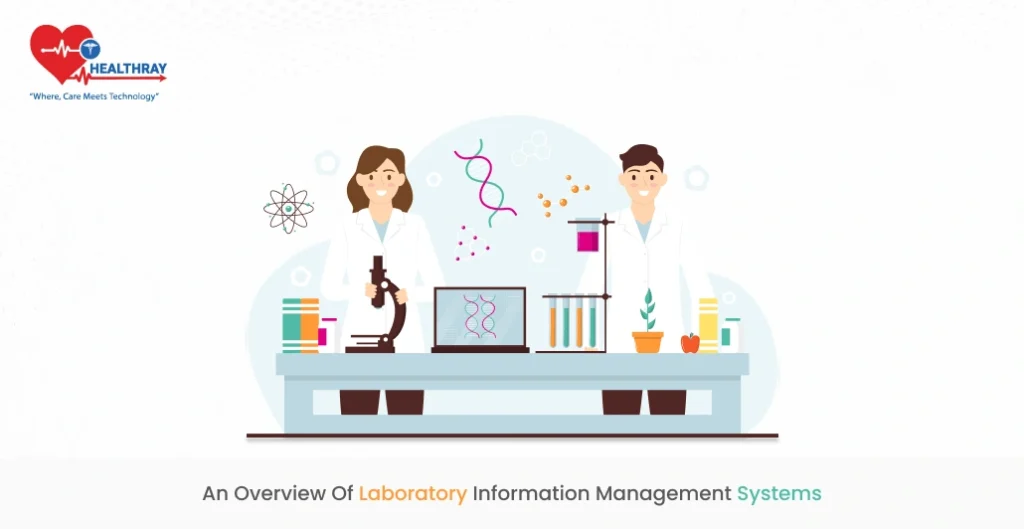
Sophisticated software systems called Laboratory Information Management Systems (LIMS) are designed to improve laboratory data and procedures management. They aim to simplify these processes for greater efficiency. Scientific lab information has been precisely stored, organized and analyzed perfectly. Additionally, the lab management information system centralizes associated details, improves instrumentation information, and tracks information.
Fundamentally, a LIMS makes lab data administration easier by automating workflow management, sample tracking, and result reporting in an electronic laboratory notebook. The Lab management information system makes it possible for labs to keep thorough records of all samples, examinations, and experiments, guaranteeing data integrity and legal compliance. Furthermore, LIMS frequently interface with other lab equipment and devices, facilitating accessible data collection and analysis.
The capacity of the LIMS solution to increase laboratory operational efficiency is one of its main advantages. Through digitizing and automating manual processes, LIMS shortens turnaround times, optimizes resource usage, and lowers the probability of errors. Ultimately, this efficiency benefits laboratory employees and clients by facilitating faster result delivery and increased production.
Simplifying to assimilate laboratory data such as inventory reports, lab documentation, research papers, patient information, record prescriptions, and other guides. The lab management information system expedites test outcomes, enhances aliquot quality, merging of associated systems, and improves result outcomes. The lab management information system assists in precise lab documentation, improves workflows, and depicts information in the single dashboard. Improves productivity level and avoids data loss by proper security.
Furthermore, LIMS systems are essential to the interpretation and analysis of data. These systems give researchers strong capabilities for statistical analysis, trend detection, and data visualization, enabling them to draw valuable conclusions from data collected in their studies.
The lab management information system enhances specimen quality, improves information, and increases work efficiency. It clubs a variety of information at a unified healthcare platform, monitoring healthcare details, and secure information. Additionally, the laboratory information management system improves instrument performance, accurate data analysis, and enhances work efficiency.
Laboratory information management systems are vital resources for contemporary labs looking to boost productivity, foster scientific creativity, and strengthen their data management skills. Because of its sophisticated characteristics and capabilities, LIMS considerably quickens the rate of research and development in various scientific fields.
Why do laboratories need a laboratory information management system?

Every day, laboratories in industrial, academic, and clinical contexts deal with enormous volumes of data. A Laboratory Information Management System (LIMS) is necessary to improve overall lab efficiency, assure data integrity, and streamline operations. Here’s why a LIMS is essential for labs :
Data Organization and Management
Laboratory tests, tests, and examinations make different data sets. A LIMS offers a cemented organization for effectively taking after tests, managing, putting absent, and organizing this data. The lab management information system makes a difference with test cataloging, test taking after, test organization, and keeping related data, tallying exploratory traditions and comes about.
The sub-components of data management are recording, segregation, and accumulation of different folders in a well defined format. Furthermore, the lab management information system creates visualized reports in an unified screen with the diverse formats. Reduces duplicate information, eliminates errors, analyzes information, and tracks accurately. Additionally, laboratory information systems increase data security.
Quality Control and Compliance
Bearings and strict quality measures regulate research facility operations. A LIMS makes a contrast to ensure compliance with measures like ISO 17025, GLP, GMP, or CLIA by actualizing rules, keeping audit trails, and empowering documentation. The lab management information system reinforces the preservation of traceability and data perception, both of which are crucial for authoritative audits and evaluations.
Workflow Automation
Taking care of and entering data by hand is labor-intensive and slanted to botch. LIMS computerizes a number of inquiries about office techniques, such as test taking after, result computations, and enumerating. The lab management information system speeds up shapes and diminishes botch probability, allowing labs to successfully handle extended workloads.
Collaboration and Communication
Compelling collaboration, data mining, and correspondence are significant in topographically isolated or multidisciplinary labs. Programs like LIMS permit analysts to collaborate on ventures, share information, and communicate more effectively. Since innovation makes real-time information conceivable and permits scholars to collaborate remotely, the lab management information system boosts by and large efficiency and productivity.
Data Analysis and Reporting
Among the various built-in features that software solutions such as LIMS usually offer for data analysis and reporting are statistical analyses, data visualization, and reliable report preparation. Hence these resources aid in decision-making and assist researchers in deriving insightful conclusions from their data.
The lab management information system maintains a large number of clinical documents, exhibits visual information in a single dashboard, and tracks expenses. Moreover, the lab software enhances data accessibility, improves insights, and increases flexibility. Delivering high-quality laboratory service, augments lab efficiency, and improves user-experience.
A Laboratory Information administration System (LIMS), which provides essential functions for data administration, quality control, workflow process development, automation, collaboration, and data analysis, is a must for modern laboratories. In the end, the lab management information system boosts productivity and efficiency while ensuring compliance with legal standards encourages innovation and scientific research.
How does LIMS software work?
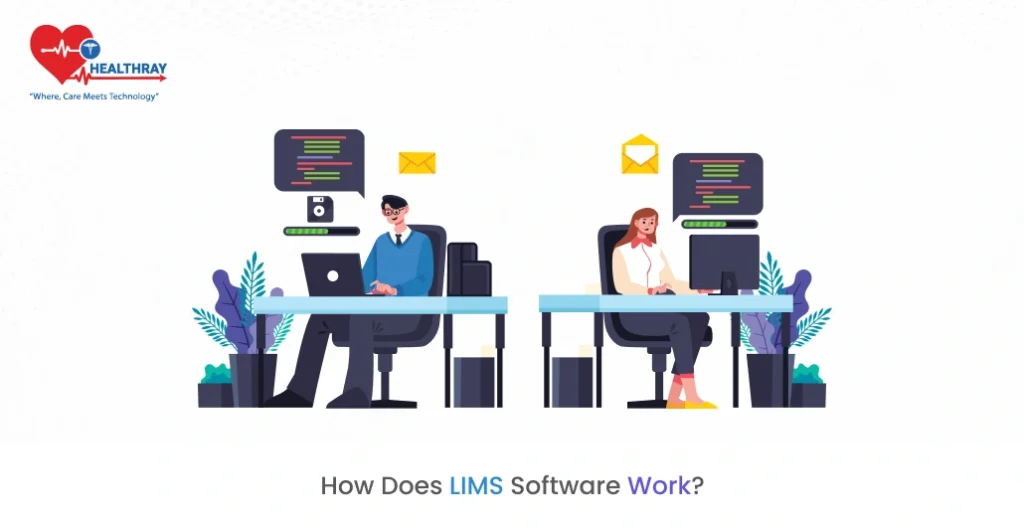
The smooth handling of information and operations is basic in today’s logical and mechanical investigation laboratories. Each day, research facilities deliver colossal sums of information and analytical instruments, which incorporate stock administration, test following, and exploratory results. The laboratory information management system (LIMS) ended up fundamentally rebellious in this complex arrangement of logical interests, planning research facility data frameworks, forms, and assets.
LIMS’ computer program arrangement, progressed innovative integration planned to optimize and streamline laboratory operations. Hence its capability covers various disciplines and center capacities, such as test administration, laboratory information systems, examination, quality control, and administrative compliance. The importance of LIMS’s work in empowering analyst participation and advertising a centralized stage for information administration is developing as research facilities proceed to development in complexity and scope.
This introduction aims to disentangle the complexities of LIMS software by clarifying its underlying concepts, essential features and working procedures. Hence by dissecting the fundamental elements of a LIMS implementation and investigating its operation dynamics, we hope to offer a thorough grasp of how this essential technology functions inside the laboratory ecosystem.
The Evolution of Laboratory Information Management Systems (LIMS)
The beginnings of the enhancement of LIMS can be seen inside the late 20th century, as research facilities started to stand up to the challenges brought on by creating data volumes and rising regulatory prerequisites. LIMS courses of action, to start with sketched out as fundamental data organization systems, have progressed astoundingly due to growing demands from the coherent community and impels in computing advancement.
With the contemporary LIMS system, you can track each and every lab task like sample management, instrumentation management, compliance management, and HR management. Moreover, you can view detailed information from the patient ID number like sample timing, assigning doctors and more. Fostering assistance from pre-analytical phase to post analytical phase.
The advanced LIMS promotion has experienced a worldview move, combining the changed needs of investigating offices in numerous regions with stand-alone desktop apps, web-based stages, and cloud-hosted apps. The role LIMS Play In Healthcare is a vast one.
Core Functionalities of LIMS
In a general sense, LIMS gives a wide system for supervising and overseeing research facility information and operations, counting a wide extent of highlights catered to the specific prerequisites of logical workflows. Hence a few highlights are test following, workflow mechanization, information examination, lab instrumented and integration, quality confirmation, and administrative compliance. By coordinating these different components into a single stage, LIMS empowers labs to progress efficiency, accuracy, and traceability over their exercises.
Operational Mechanisms of LIMS
With the lab management information system, smooth integration of assets, information, and forms inside the research facility environment is basic to the operational flow of the LIMS framework. Moreover test lifecycle administration, which comprises the precise following of tests from securing to transfer, is vital for its working.
Real-time test following is made conceivable by LIMS utilizing standardized identification or RFID innovation, ensuring test astuteness and traceability through the experimentation handle. Moreover, LIMS makes mechanizing monotonous forms like test information section, test arrangement, and announcing more available, which diminishes human mistake and maximizes workflow viability.
Data Management and Analysis
Researching for document precision?, you must focus on the lab data management for accurate regulation compliance and removing errors by AI methodologies.
With the segmentation techniques, you can filter out the needed information and provide assistance to customers immediately. Organized work can do a lot of things, which are beyond your thinking and expectation. For that, you must need the pathology lab platform.
The LIMS database has the capacity to handle and assess colossal sums of logical information delivered within the research facility. This could be a component of its usefulness. LIMS spares information and orchestrates it in an organized design. Hence this is facilitated by a robust database foundation, enabling basic examination and recovery.
Moreover, LIMS permits analysts to extract valuable insights from their experimental results. It provides tools for statistical analysis, trend identification, and data visualization. The lab management information system encourages information trade and cross-functional collaboration among investigating areas by empowering information integration and interoperability.
Quality Control and Regulatory Compliance
Compliance with strict directions and quality measures is basic in mechanical research facilities and logical contract inquire about organizations. LIMS is essential for ensuring adherence to lawful necessities. These include Great Fabricating Practices (GMP), Great Laboratory Practices (GLP), and ISO guidelines.
It plays a crucial role in maintaining compliance. LIMS offers a solid foundation for following deviations and recording processes. Hence, it also provides extensive records through quality control frameworks and review trails. LIMS moreover makes it less demanding to make administrative documentation and reports, assisting the review readiness and accreditation.
Try out laboratory management information systems for the best results!
For better information administration, more effective workflows, and expanded efficiency, check out laboratory information management system (LIMS). These frameworks offer a centralized stage for all laboratory operations by joining exercises like stock administration, quality control, and test checking. By making it basic to follow tests from gathering to investigation, LIMS can lower mistakes and boost effectiveness.
Fast decision-making helps by real-time information, which too ensures administrative compliance. Moreover, in the present day, LIMS solutions have capabilities for customizing to meet the one-of-a-kind necessities of your research facility. They ensure crest execution. For ideal results in effectively and proficiently overseeing your research facility operations, grasp LIMS.
Conclusion
To sum up, a cutting edge LIMS could be an instrument that ties together various functions into a centralized arrangement. This revolutionizes the investigation of office operations. Robotizing assignments like stock control, quality control, and indeed test administration, taking after makes strides viability, precision, and compliance. Workflows are streamlined by LIMS, allowing for smooth departmental communication and real-time data openness for well-informed decision-making. Hence its flexible highlights provide perfect execution and suit the interesting prerequisites of distinctive inquiry about offices. For the foremost portion, LIMS basically increases abdicate, brings down goofs, and makes strides in common investigation office organization, making it a vital gadget for present day inquire about offices indicating for enormity.
